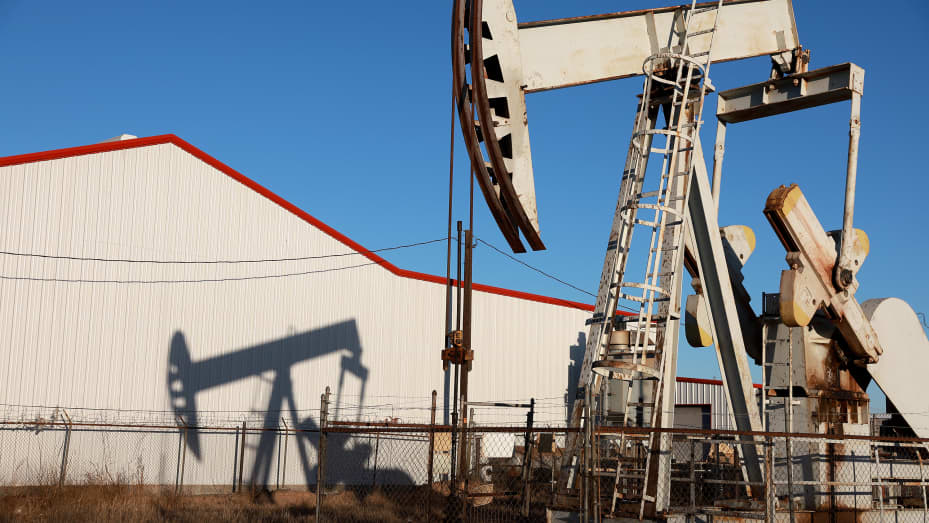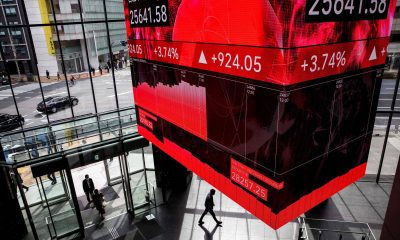Commodities
Oil down 2% as crude stocks spike, Fed cautions rate hike down the road

Crude prices fell almost 2% Wednesday, clawing back most of their gains from the previous session, after data showed crude stockpiles grew seven times more than expected last week.
The Federal Reserve’s caution that it could resume rate hikes in July, after halting them this month following 10 straight increases, also dampened the mood for risk-taking across markets. Rate hikes and recession worries are partly responsible for this year’s 15% drop in crude prices.
“Crude prices declined after both a mostly bearish EIA report was followed by a hawkish Fed skip that included a clear message that they have a long way to go until they get to the 2% inflation target,” said Ed Moya, analyst at online trading platform OANDA. “The Fed is going to have to kill this economy to conquer inflation and that should keep crude prices heavy.”
New York-traded WTI crude settled down $1.15, or 1.7%, at $68.27 per barrel. Week-to-date, the U.S. crude benchmark is down about 2% despite a 3% rally on Tuesday. WTI lost 3.5% over two prior weeks.
London-traded Brent settled down $1.09, or 1.5%, at $73.20. For the week, the global crude benchmark was down about 1.5%, extending the 3% slump over two prior weeks.
The latest slide in crude prices came after data showed U.S. crude inventories jumped almost 8 million barrels last week, way above forecast, while fuel stocks exceeded expectations as well, raising questions about energy demand during the peak summer travel period.
The U.S. crude inventory balance rose by 7.919M barrels during the week ended June 9, the Energy Information Administration, or EIA, said in its Weekly Petroleum Status Report.
Industry analysts tracked by Investing.com had only expected a build of 1.482M barrels instead in the latest week.
In the prior week to June 2, crude stockpiles slid by 0.451M barrels.
The crude build reported by the EIA, however, came with a small caveat: the release of 1.9M barrels from the U.S. Strategic Petroleum Reserve, without which the inventory rise would have been around 6M.
On the gasoline inventory front, the EIA reported a build of 2.108M barrels. Analysts had expected the agency to cite a build of 0.637M barrels instead, after the previous rise of 2.746M barrels. Automotive fuel gasoline is the No. 1 U.S. fuel product.
With distillate stockpiles, the EIA reported a build of 2.123M barrels. Analysts had forecast a 0.922M barrel rise, against a build of 5.075M in the prior week. Distillates are refined into heating oil, diesel for trucks, buses, trains and ships and fuel for jets.
Commodities
Oil prices rise; U.S. crude inventories plunge, Russia-Ukraine truce eyed
Commodities
India’s Reliance to stop buying Venezuelan oil over US tariffs, sources say
Commodities
Oil prices climb on Venezuela supply worries

 Forex3 years ago
Forex3 years agoForex Today: the dollar is gaining strength amid gloomy sentiment at the start of the Fed’s week

 Forex3 years ago
Forex3 years agoUnbiased review of Pocket Option broker

 Forex3 years ago
Forex3 years agoDollar to pound sterling exchange rate today: Pound plummeted to its lowest since 1985

 Forex3 years ago
Forex3 years agoHow is the Australian dollar doing today?

 Cryptocurrency3 years ago
Cryptocurrency3 years agoWhat happened in the crypto market – current events today

 World3 years ago
World3 years agoWhy are modern video games an art form?

 Commodities3 years ago
Commodities3 years agoCopper continues to fall in price on expectations of lower demand in China

 Economy3 years ago
Economy3 years agoCrude oil tankers double in price due to EU anti-Russian sanctions



































